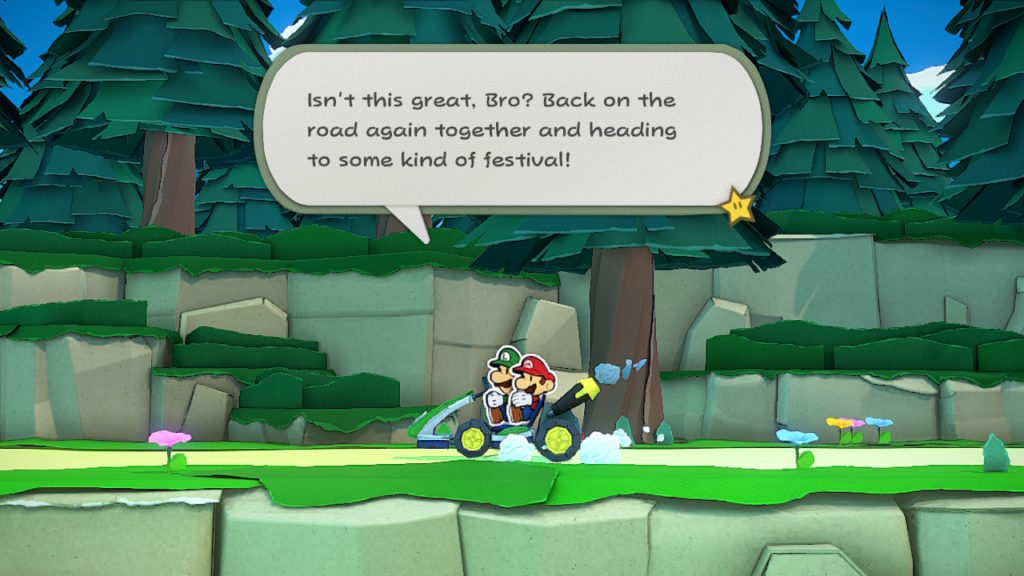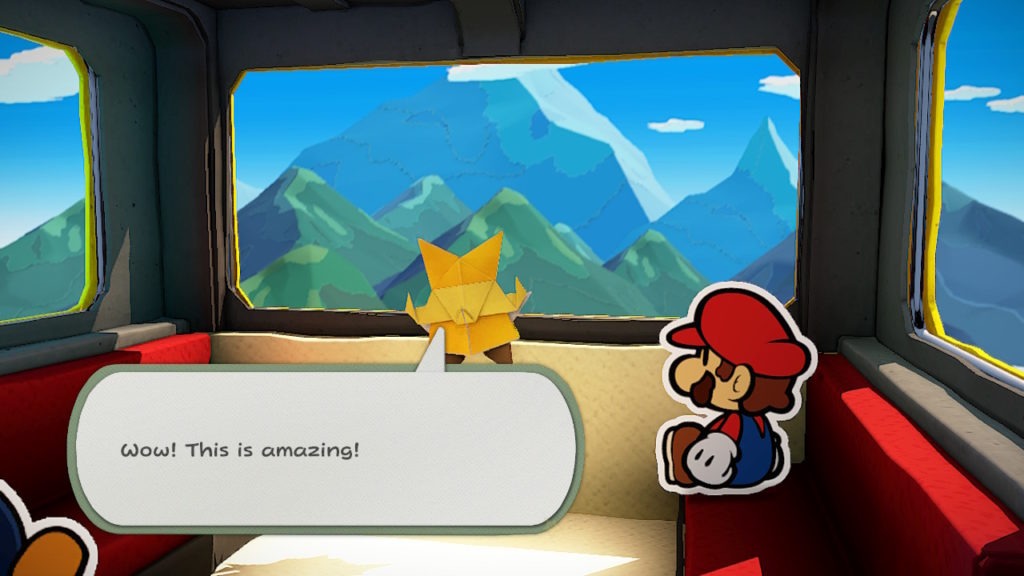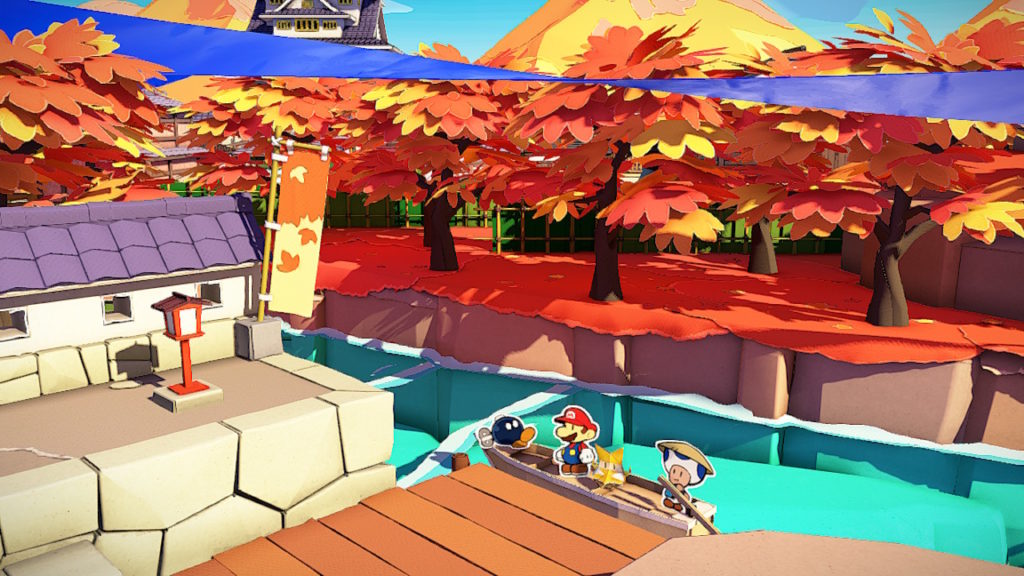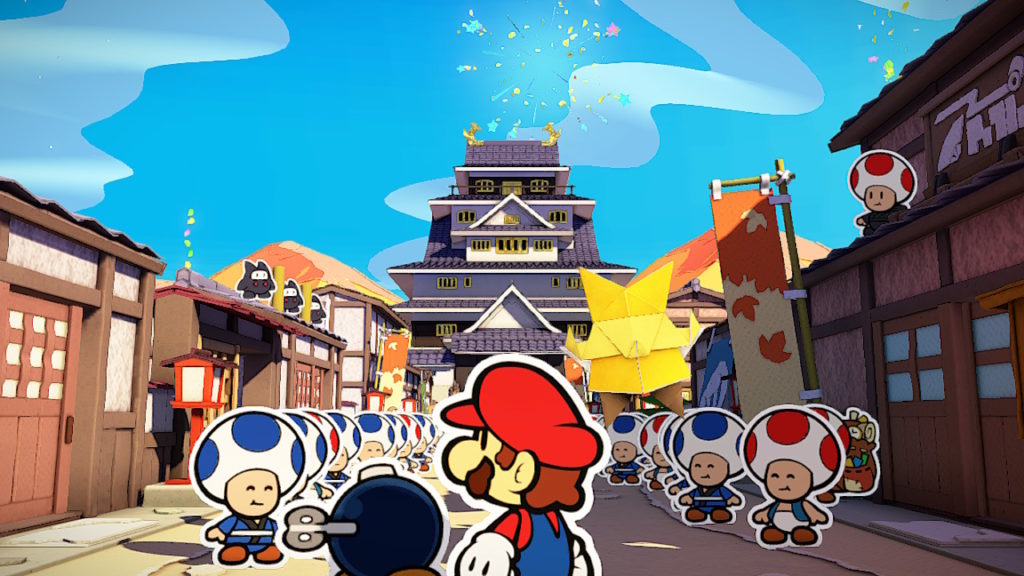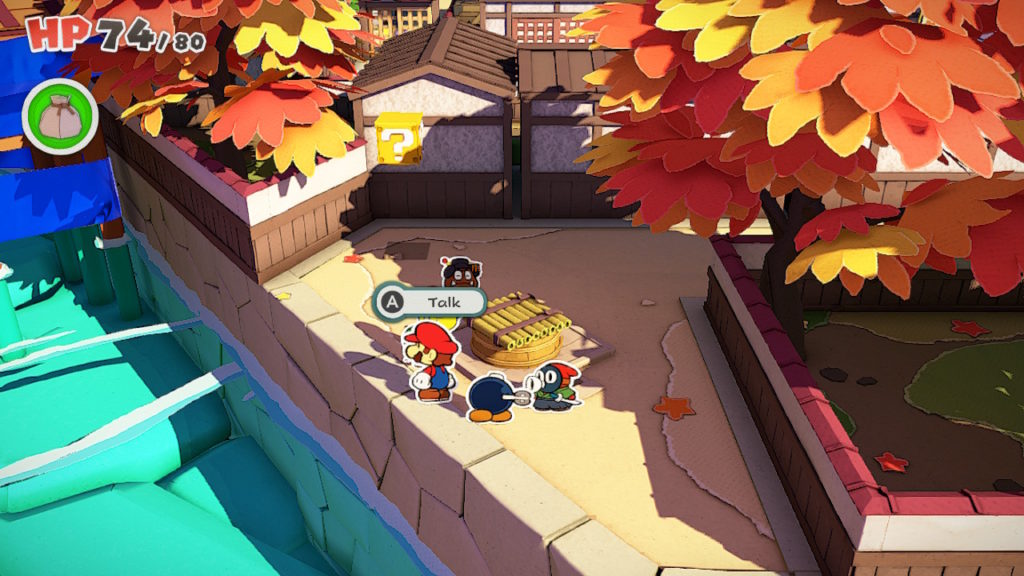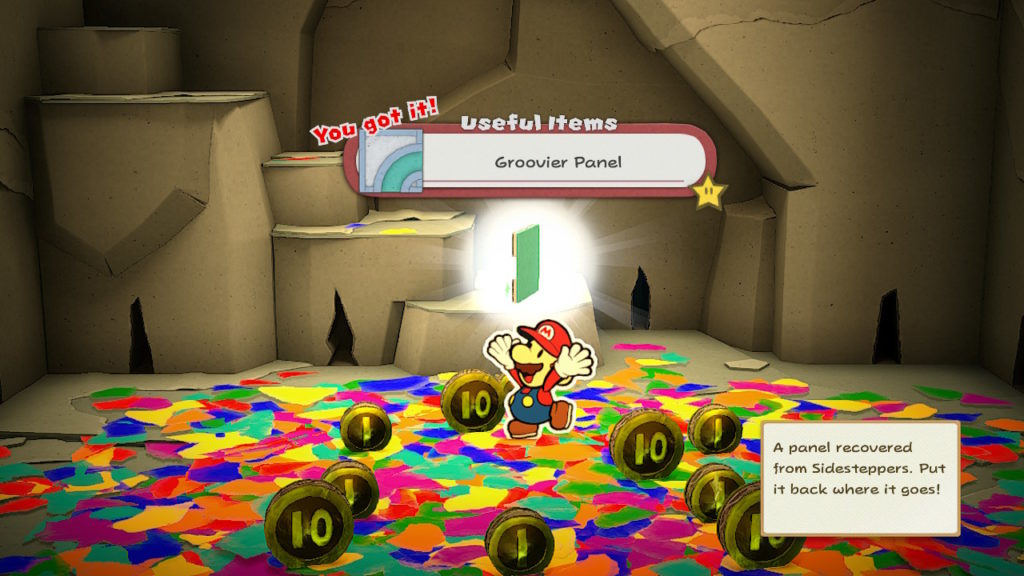
[INTRO]
If, like me, you are into war strategy games like the Advance Wars series, you will likely love Valkyria Chronicles 4. I wasn’t sure that I’d like it at first (I haven’t played the first 3 games) – something about the battle system looked complicated in the trailer I watched – but that isn’t the case and I have really got into it. I played it on the Switch in handheld mode and it really suits it quite well, despite not being designed for it originally. It was developed by Sega for the PS4 and released in 2018. It uses Sega’s proprietary “CANVAS” engine, which looks really nice and is designed to have a watercolour animation effect.
A warning: I want this Valkyria Chronicles 4 review to be detailed, so I hope it isn’t too dry in places. However, I have tried to write in no spoilers – but there are very minor ones about some features so if that bothers you please beware.
[STORY]
戦場のヴァルキュリア4 (Battlefield Valkyria – as it is known in Japan – if you are like me and like to know that stuff), is set in 1935 in an alternate timeline / universe during the Second Europan War between the Atlantic Federation and the Autocratic Eastern Imperial Alliance. This is essentially WW2 but replaces Europe with Europa and the main source of power comes from Ragnite, which is used for fuel and developed with technology to create weaponry etc.
The story follows Commander Claude Wallace and Squad E of the Federation, some of whom are his childhood friends. The Federation are desperate to fight off the Imperials and push the fight to the capital through their plan: ‘Operation Northern Cross’. They manage to push back the the Imperials, however the Imperials have a weapon who comes from a race know as the Valkyrie, who are beings with great power…
I don’t want to give away the story but I will say that it starts off quite innocent and typical of a more light-hearted JRPG, but as you reach the middle of the game it starts to get surprisingly dark, and the story richens – and with it the missions get more tough as they get more and more creative with the map / mission objectives. I think Sega deserve a lot of praise for the story here. As Valkyria Chronicles is in essence 50% visual novel, it really bolsters the story and makes it more than just a simple war game. You are very much invested in the story and characters by the time you reach the last few chapters, and you find yourself looking after your squadmates, trying not to get them killed.
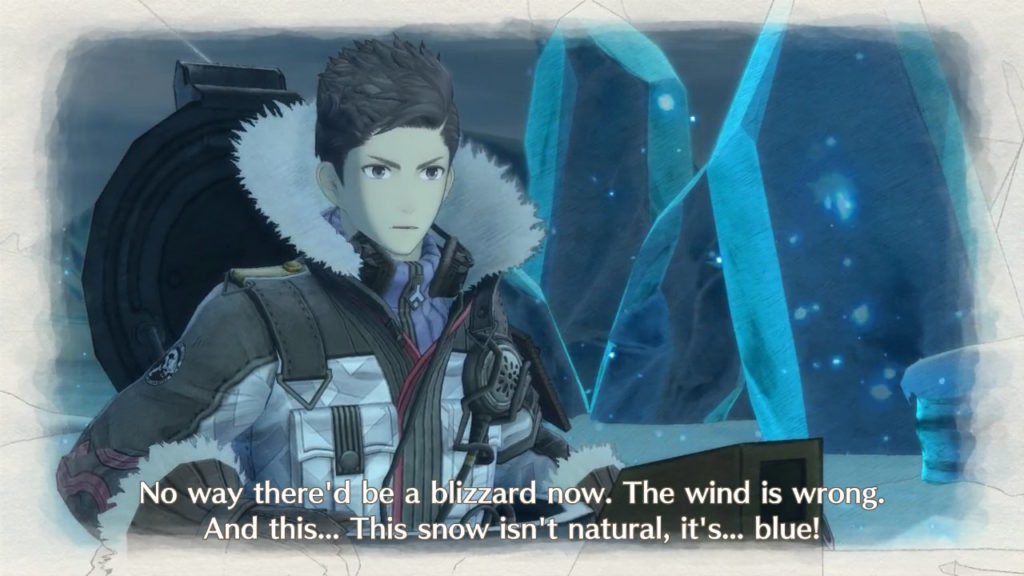
[CHARACTERS]
It’s easy for your first impressions of Claude to peg him as rather a typical JRPG main protagonist – a kind, ‘neutral’ soul if you know what I mean – I think you will if you play JRPGs, but he character develops and as the story unfolds we see him mature. All the main characters develop in their own ways, and it’s nice to observe this as you progress through the game. Events that occur in the story affect the potentials of the characters when they are in battle, which is a clever system. Riley is your typical heroine / canon main character love interest, but her character deepens also. I will say that my favourite character is Kai, because she is really cool. You’ll see what I mean. I also like Raz – it’s hard not to really – especially as his character arc unfolds.
As for the enemies, there are a handful of main recurring characters, only some of which you encounter on the battlefield. Again, I’ll keep it simple and unrevealing, but I would like to say what a great character Walz is. He is another character that is easy to judge in one way, and when you first meet him you just want to take his ass down and destroy his tank. But he surprises you in a good way as his story is told, and by the end I was really a fan of his character because of his interesting personality and his honourable and respectful behaviour towards his rivals and allies alike.
I have a soft spot for some of the side characters, too who have pretty funny backstories… What is really nice about this game is that you get to know every soldier in Squad E by the end by playing the ‘squad story’ side missions. You have to use the characters in the missions a few times (there is a hidden threshold for number of turns each character has been used) to unlock their squad story, and each of these events tells the tale of 3 characters from squad E and how they came to be part of the war and become friends with each other. You also get a mission for each story which is often a little different in objective to the main story, for example rescue character X. What’s nice about this is you feel for the secondary characters as well as the main characters when you play the main game after experiencing their story and start to develop your favourites. I would call this the main reward for completing these squad stories, but what also happens is the character’s potentials change from negative ones such as ‘forgot to reload ammo’ (duh!) or my favourite pain in the ass the ‘lose all AP’ that Neige gets which leaves you stranded wherever you are on the map when it activates, placing you in the line of fire unless you waste another move relocating her. I won’t lie, this is one aspect of the game that has annoyed me somewhat, but it’s only that negative potential that can be pretty detrimental strategically. I digressed there, but the character potentials change from negative to positive once their squad stories are completed. Potentials are aspects of the characters that activate at random during their turn with positive or negative effects. Some are more useful than others – such as double AP (movement) with Minerva – which is very useful – and this can be coupled with the ‘command’ feature that all leaders get where you can ask up to two other infantry to follow you but this only counts as one action point not three.
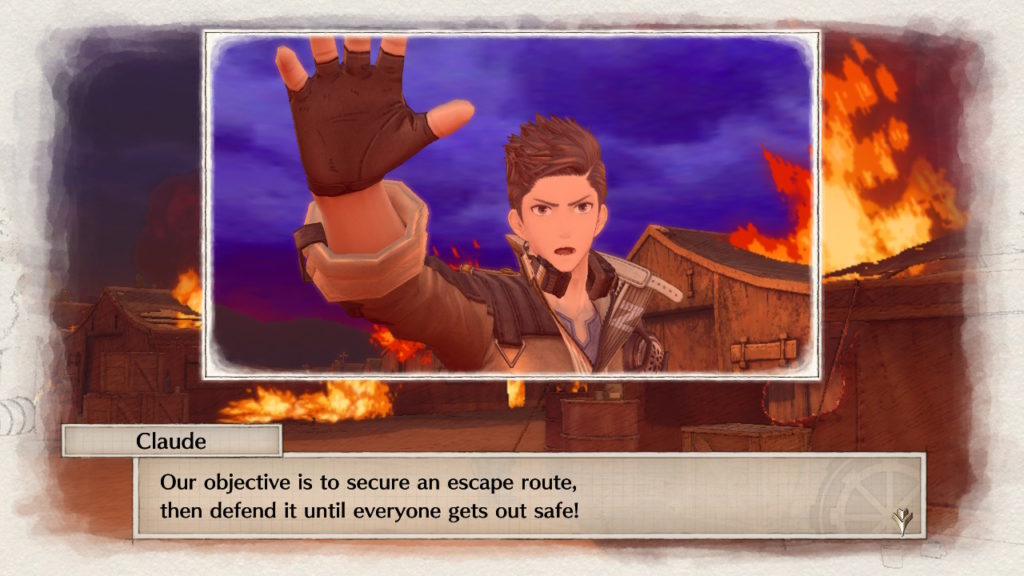
[GAMEPLAY]
As I mentioned earlier, Valkyria Chronicles is 50% visual novel and 50% strategy battles. Yes, it follows the tradition of many JRPGs (although, I wouldn’t technically class this game as an RPG..), where there are many cut-scenes and visual-novel-style story elements, so if you strictly want battles and as little story as possible then this may not be for you. But why would you think that?
The menu works out of Claude the field commander’s diary, given to him by a member of squad E, which was nice of them. It works a little like, well, a diary with chapters, and you watch story scenes as entries from the diary. You can also access the headquarters from the diary where you can visit your private quarters (view statistics, personnel files etc.), the mess hall (learn new orders), the command center (organise who is active and who is benched), the training field (level up the squad), and R&D where you buy upgrades for everything. The diary also lets you take on skirmishes for extra money and experience and check out the squad stories and extra stories (DLC). These are useful for gaining some more levels ahead of the game. Back to the missions, after you watch the visual novel style videos, a mission appears. You are free to go back and re-watch scenes and replay missions if you are like me and like to get the best rank (which is A rank – which is difficult to achieve early on as the system mostly depends on the number of turns you take to finish the mission).
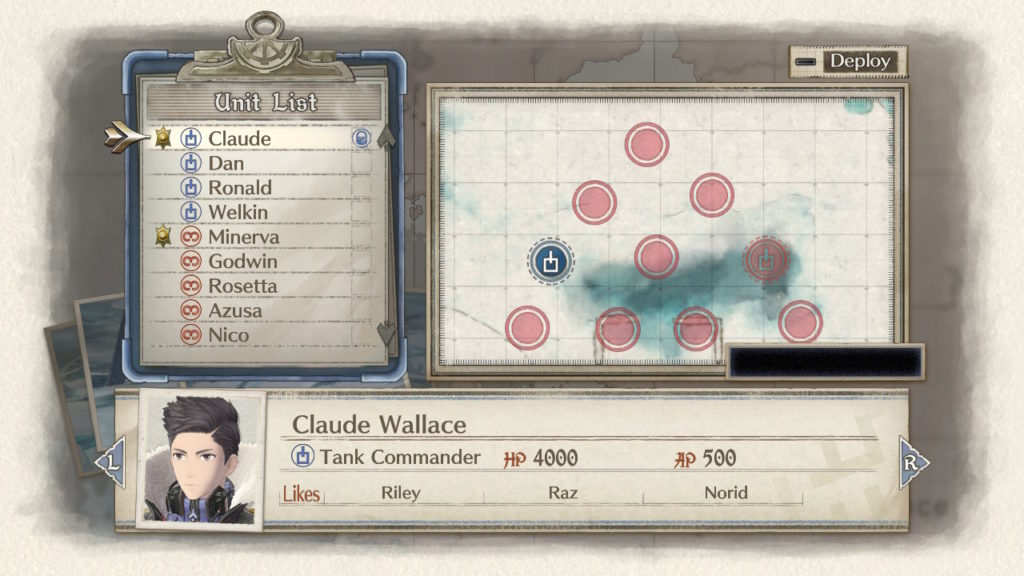
At the start of the missions, you select the characters based on their classes: scout, shocktrooper, sniper, engineer, lancer and grenadier. This is of course a strategic decision. Which brings me to my first negative point: sometimes you can’t be sure what soldiers to choose for the map. The characters themselves don’t differ much within the same class other than the potentials they have (abilities or disabilities), but depending on what classes you need for the map you find yourself thinking ‘ah yes, I want Azusa the chill but slightly odd scout for this mission’ but you already have too many scouts on the board and you have to pick annoyingly timid Neige (more on her later). The mission outline helps you decide generally, but you don’t see the map (other than a basic outline) during the briefing, so sometimes you start thinking ‘I chose the wrong units for this map’ when you start getting taken out by grenadiers. It’s a small negative point because you can always start again without penalty, and I appreciate that showing you the map fully before you start can spoil the surprise, so it’s not a big deal but still worth a mention.
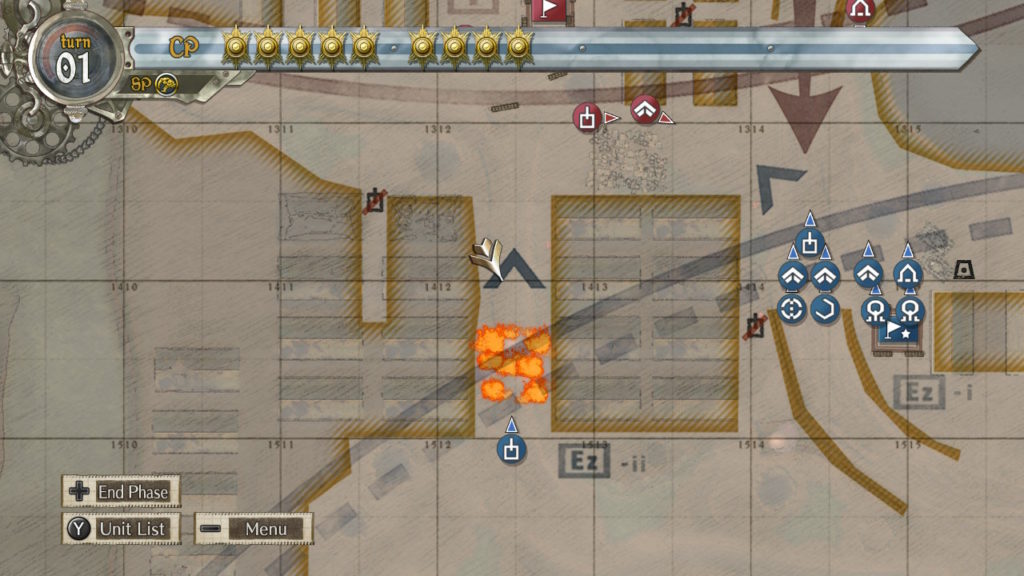
Anyway, once a mission starts, you see an overview map of the battlefield, and when you select a unit to control the perspective switches to 3rd-person with a cool zoom into the battlefield (which the Switch hardware struggles with a little). At the start of the first mission, I thought it was unclear what the controls were and I got a little stuck :/ The game isn’t very good at telling you about some of the functions – it hides them away in the menu. Some people prefer this but I think it is a little too sparse – at least for newcomers to the series. Furthermore, some of the features I had no idea existed and only realised later on e.g. engineers being able to disarm mines and rebuild sandbag walls! What! I could have been so much more efficient earlier! The only clue I had was the button prompt in the bottom left corner. They could have put this stuff into the tutorial / first mission. It’s not a dealbreaker really, of all things that the game could fail on I can forgive it for this over something more annoying / serious.
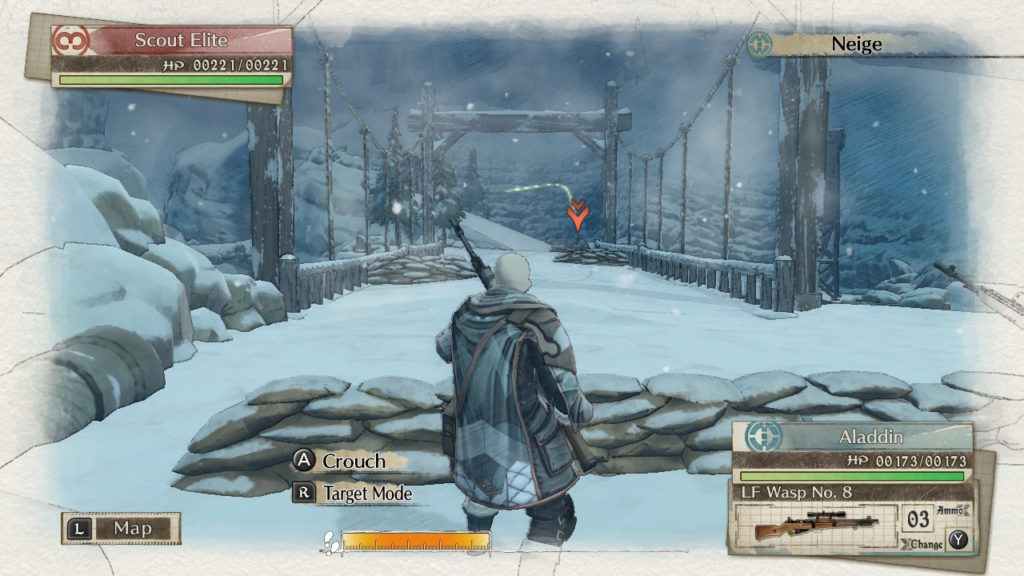
The way the turn-based system works is you get a set number of turns per round, which from what I can tell is partly based on what the game gives you per map, and partly on the number of high-ranked soldiers (or ‘leaders’ as the games calls them) you have deployed. If a high-ranked soldier gets taken out, then you lose an action / turn point for the overall round. It’s a good system that works well and balances out as the enemy also uses it. This is a good time to mention that it is possible for soldiers to die (permadeath) if you don’t get to them in time to call Karen the medic. This means that for the rest of the story, they are gone. I quite like this element to the game as it makes it interesting, but luckily it isn’t hard to keep them alive as you get a full turn to rescue them, and there are orders that allow you to rescue them (more of that later). As for the classes of soldier and their skills, there are a good mix of abilities that you can take advantage of. Scouts can move quite a distance per turn, and later get a very useful grenade upgrade. Shocktroopers have better defence and firepower, but a low firing range. Again, they have a very useful flamethrower upgrade that is very effective at killing units crouching by sandbags, where you get a defence boost. Snipers are not so useful to be honest earlier on as their firepower is dulled, but later they are very useful if you don’t get them killed by leaving them out in the open at the end of your turn. Engineers lack in firepower and defence, but are very useful units as they have a good movement range and provide a lot of support: tank repair, ladder and sandbag repair, mine defusal, ammo supply to tanks and infantry and ragnite revival (can fully revive allies not just heal). Lancers can take a hit (or many) from explosives and of course are geared towards destroying tanks. Grenadiers are a useful unit against all classes including tanks depending on the weapon you have equipped, but they are very open to attack – perhaps ironically (and frustratingly) most of all from other grenadier units. Finally, higher-ranked units (leaders) also have the ability to command up to two other units so that they move with the commander and fire with them also. This is very useful as it only consumes 1 turn, not 3 as it would if you were moving each unit separately. Even better, say the commander was a scout (Claude or Minerva for example), then the other units move as far as they do even if they are a class that can only move a short way each turn like the lancers.
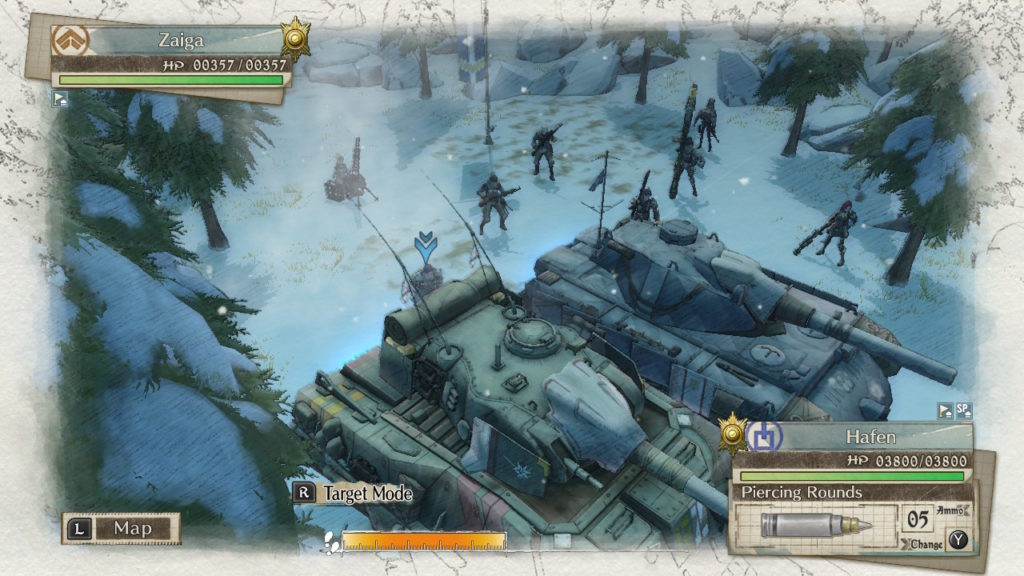
Tanks are fun aren’t they? Well the Hafen – squad E’s tank named after Claude and CO’s hometown – is almost a character in itself. The Hafen is versatile as it has a machine gun, mortar and armour piercing shell capabilities, covering assault that is effective against all the different classes. You have to be careful not to put it near too many anti-tank cannons and other tanks, but otherwise they can be safely moved right into the middle of the action in most cases. The major weakness for tanks – and I mean major (perhaps too majory actually) – is the one-shot-kill weakness of tanks: if you fire at the tank’s ragnite radiator, typically located at the rear of the tank. It has caught me out a few times even when I have taken provisions to shield it by facing the rear away from the enemy. One minor gripe I have about tanks other than that is that I sometimes get tanks caught on an invisible wall / game boundary which wastes some AP (movement) unnecessarily. Sometimes when you think it’ll get through, it won’t. My favourite tank, though, is the Edelweiss, which is a DLC tank and a cameo from the first VC game – it just looks cooler to me (in the above screenshot, the Hafen is on the left, Edelweiss the right).
True to the usual JRPG conventions, you have decent control over customising what weapons and upgrades you go for (assuming you have the money), including armour and weapon upgrades for the tanks. You can upgrade the abilities of the infantry too by using experience you earn during missions to level them up on the training field at headquarters.
To summarise, the gameplay is really fun, and the devs always give you a new challenge as you go to change things up a little. The map / 3rd-person view combo works really well, but sometimes you can get a little lost despite there being a minimap – maybe it’s just me though. Yeah, it’s probably just me…

[TACTICS]
VC4 doesn’t babysit you. As you move from mission to mission, the maps are varied, new elements are introduced and the AI doesn’t always follow the same routine. I never found that I ‘figured out’ the system to the point where it got too easy like you can sometimes feel with some games. In fact, it’s easy to mess up the first time you play a mission as you are in the dark as to what the best course of action is whilst using as little CP as possible. This makes VC4 a good difficulty I’d say. You get a choice the first time you play the game to play on easy of normal (I chose normal), so if you don’t have faith in yourself and are here for the story I’m sure easy will be manageable.
Generally, you have to be as tactical as possible in this game as some of the maps can be hard. It is more forgiving than Advance Wars, though. Crouching by sandbags is a no-brainer to reduce damage, and hiding in grass is even better as even if the enemy sees you do it, damage is reduced if they fire at you and other enemies won’t detect you unless you were in their line of sight or they get close to you. There is also the barriers you can hide behind and covered shelters to avoid falling grenades from grenadiers. Some of the scenery is destructible, so it is worth taking advantage of this. The aim of the game if you like is the less CP you waste destroying an enemy or moving across the map the better.
The weather of the map also affects the tactics, as blizzards reduce movement and visibility, as does the cover of night and fog. The game throws all sorts at you. Also watch out for those mines especially on maps with bad weather!
Another ability to take advantage of is the orders. Orders use up one CP (turn point) or more depending on the order and it’s effect, but there are a variety of useful aids such as rescue fallen allies, fortify tank armour, improve aim etc and you learn more orders as the game progresses.
Another aspect worthy of note is that you can call for backup, even by redeploying fallen allies that have been rescued, from any camps, including captured camps, on the map. This allows you to call on units from newly captured camps instead of wasting turns getting slower units to move across to the other side of the map.
One thing I like to do tactically is placing a tank or shocktrooper near an enemy at the end of that unit’s turn. This way, when the enemy moves they will get damaged or killed by inception fire! Haha! That is always fun to watch, but more importantly, it saves you wasting too many moves and as long as you are sure that your unit won’t get killed it’s a good tactic.
Although it is to your advantage to be tactical, to achieve rank A on a mission, the only parameter the game seems to care about is how fast you achieve the goal, not accounting for such trivial things like how many of your teammates survive the battle. Just something to be aware of.
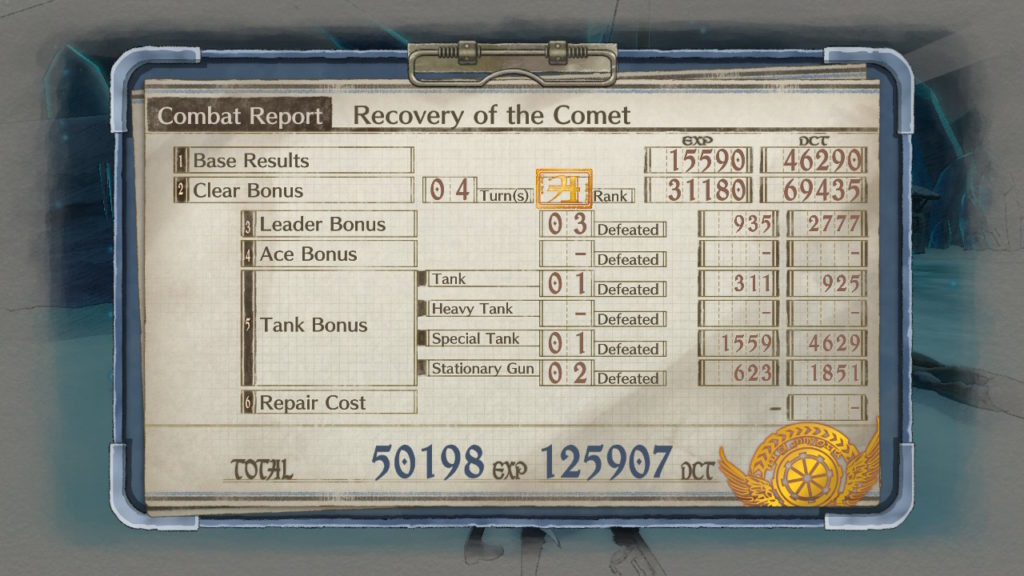
[VISUALS]
It’s a great looking game! The watercolour look is really pretty and the maps / level, character and vehicle designs are all really good. I like how you get some effects on the overview map too like fire and snow. Movement animations are slick also. The boundaries are nicely designed as well, and the background blends seamlessly beyond the game boundary.
[SOUNDTRACK]
The music is very nicely done and is memorable and effective for a war genre game. Not much else to say really.
[VOICE ACTING]
I switched to the Japanese voices and they are really well done but I haven’t checked out the English dub yet. I particularly like Kai’s voice and Raz’s is good also. As for the side characters there are some cool & interesting voice work there also.
============================================[CONCLUSION]============================================
Valkyria Chronicles 4 is a great tactical war game with the added bonus of having a great story and characters that you care about, which enhances the enjoyability tenfold. In fact, it’s not a bonus as such – it’s very much part of the game being part visual novel. If you enjoy visual novels and tactical war games, then it’s an easy win – this game is perfect for you. The gameplay is fun, and the game presents you with new challenges each mission. There is little to criticise, honestly, other than a few annoyances here and there that I highlighted in the review. It clocks in at around 80 hours (well, I am slow at completing games so for most maybe 70 hours..) and that was including the skirmishes and squad stories and some DLC, but that is more than enough content for your buck. I am going to delve into the first game in the series now. Thanks for reading.
====================================================================================================
